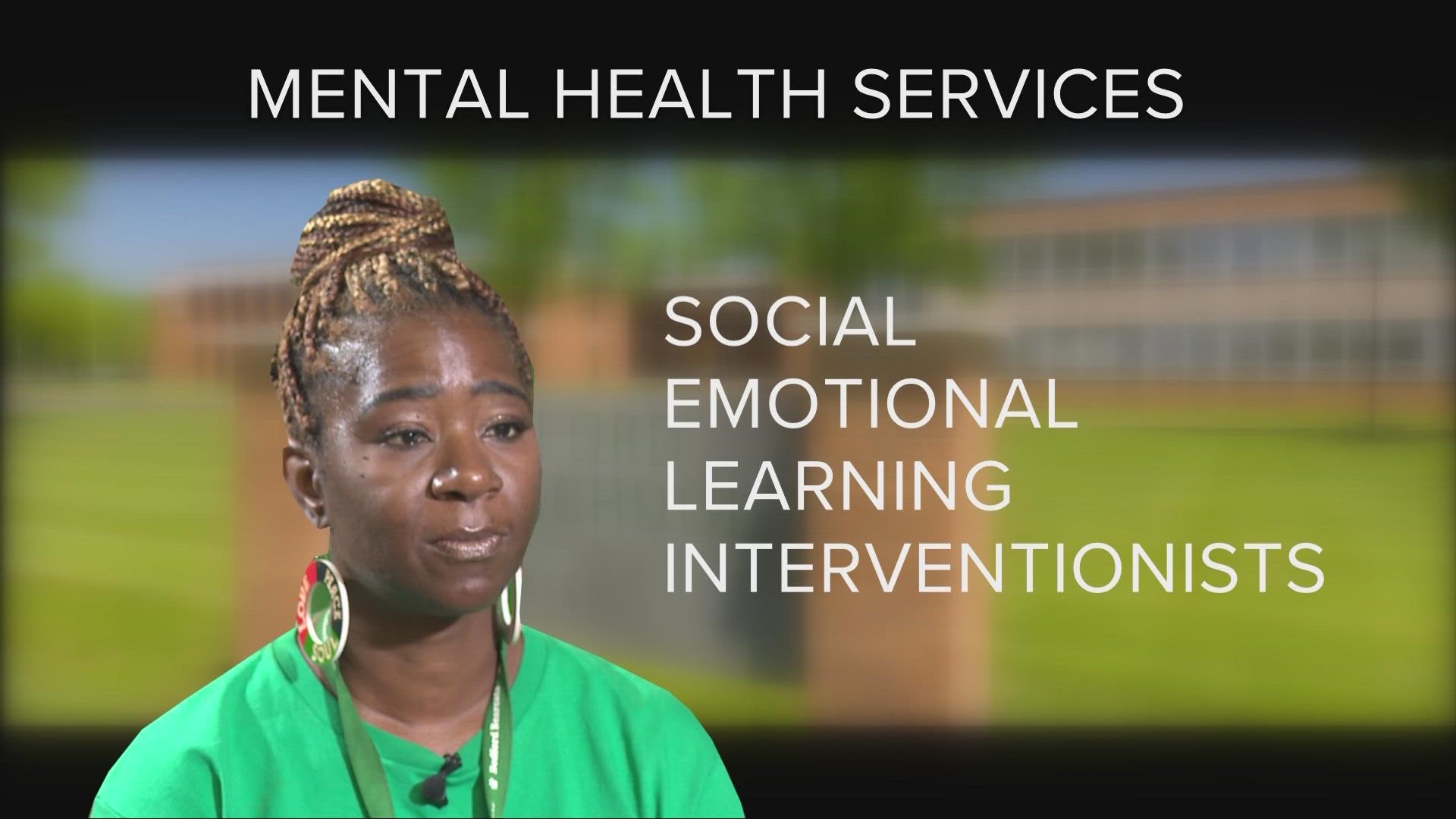BEDFORD, Ohio — The pandemic shined a very bright light on the need for mental health for young people. Recently, the Biden administration approved mental health funding for the nations K-12 schools.
Like many districts last year, Bedford City Schools saw a jump in violence. Police were called in to respond to fights, as well as assaults on staff.
Randal Rosario witnessed more stress and anxiety in school halls after a year of remote learning. He's hoping to help make things better.
"If we were somehow able to bridge that and make them see each other in a good light of way. this could be a better school and better community overall," Randal said.
Randal is a sophomore on the football team. He and cheerleader Kiera Taylor, a junior, are among 73 student ambassadors who make themselves available to listen, or link students to help.
"A couple of people always come for me to help, or to talk to, so I just talk to them and tell them to calm down. If they need a breath, I'll ask about the classroom, so they can talk, they can breathe, go to the bathroom, let their emotions out and then get back to learning," Kiera said.
It's Kiera's second year as an ambassador - and no, she's not a "tattle tale."
"The reason I'm telling is to benefit and help you in this situation," she said.
The Bedford City School District has expanded mental health services this year.
Faith Gordon supervises social workers, therapists, and a new group of social, emotional, learning interventionists who work in the classroom -- helping both students and teachers.
“I can work with a student and teach them some coping skills, but then when they get inside the classroom, and they trigger, they forget all those coping skills. So we have someone in the classroom that has already worked with them on that. They can remind them to take a deep breath, find out if they need to take a walk for a few minutes. We make sure that we're not wasting a whole lot of education time, but they are able to get regulated and get their brains back in that mode of learning," Gordon said.
The help goes beyond coping skills. Social workers handle other barriers to learning.
"Sometimes we get students who are just in need of clothing or food or anything like that and so we help," Gordon said.
Full-time psychologists target mental health obstacles or bridge the gap if the student’s parent loses insurance covered care.
"Learning how to deal with our trauma, we used to say ‘what's going on in this house stays in this house’, well, that trauma continues to flow if you don't get the help you need," Gordon said.
For more intensive care, the district partners with Beech Brook behavioral health center.
The Bedford team makes itself known to students and they're needed now more than ever.
"Just nationally, we've seen that the social emotional needs flew up, the depression numbers flew up, the suicide attempts flew up and so this is very much needed," Gordon said.
Using a guide from a national model, students learn how to manage emotions, articulate feelings and needs, build positive relationships, communicate better and learn positive decision making skills. Education that most of us need, but likely never received in high school.
Making mental health common, available and talked about is also helping to remove the stigma of mental health in a community that rarely seeks the service.
But according to the National Center for Education Statistics, during the 2019-2020 school year, about 55 percent of the nation's public schools provided mental health assessments.
That number is growing since the pandemic shined a light on the need. Six out of ten schools where more than 75 percent of students are minorities, are more likely to offer mental health. Bedford’s student body is 82% African American.
For Gordon, these life lessons are lifesaving.
More from Monica Robins:

